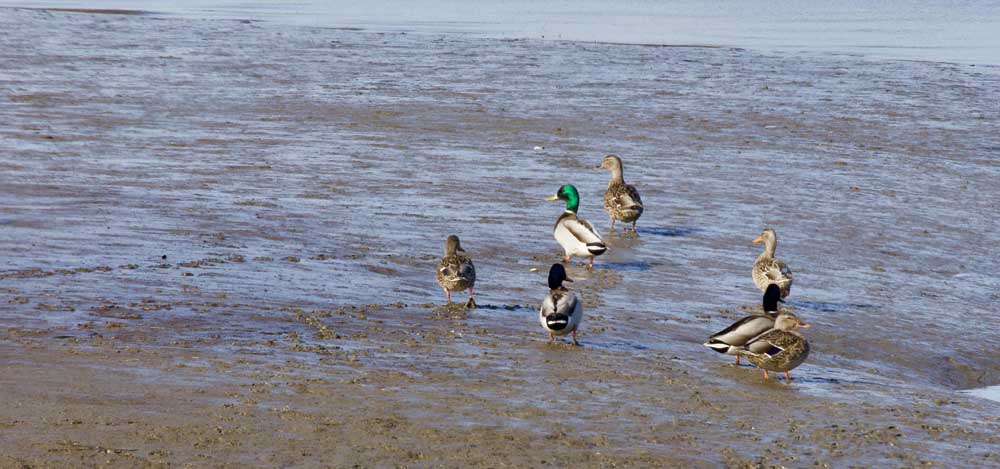Birding: Birds are on the move
Published 7:50 am Friday, March 8, 2024

- Mallards are everywhere. Many will stay but many will move on to breed in Alaska and Quebec but also in other areas of the United States such as southern California, Virginia, Texas as well as in northern Mexico.
Every day is a beautiful one here on the Peninsula. Even the rainy and stormy days have a place in my heart. There have been a few sunny and warmer ones of late. These calms between the storms have been amazing!
American robins are here in large numbers now and have been for the last few weeks. Every tree looks as though it is decorated for Christmas with American robin males. Their bright orange breasts glisten in the sun. They are everywhere it seems. Many will stay with us, but many will continue their journey northward. Female American robins are not far behind. Soon we will see large flocks in our yards and in the trees. Varied thrush numbers are beginning to dwindle. They are on move to their breeding grounds.
Northern flickers are also part of the tree decorations these days. Robins perch in any tree, but northern flickers seem to prefer snags. The ones I have seen are simply lounging. While there aren’t as many in a tree as there are robins, I have seen as many as five perched on the same snag. They are in the yard too flying about looking for breakfast or lunch. One or two have found what they need at the suet feeder. They are on the move, and again some will stay and nest, but others will move on.
Dunlin are gathering by the thousands on the ocean beach getting ready to move on to their northern nesting grounds. Among them are small flocks of sanderlings, black-bellied plover, semipalmated plover and western sandpipers. All of the shorebirds I a seeing are resting as well as foraging for tasty morsels to fatten up for the next stage of their migration. They are on the move.
The trumpeter swans that have over wintered in Black Lake, in the wetland on 227th and in Hines Marsh will soon be on the move to their nesting grounds on the tundra. Two trumpeters flew over the yard the other day. An Observer reader reports that he saw trumpeters flying over his house this past week too. Our trumpeter swans will also be on the move very soon.
American wigeon are lounging and feeding in the wetlands along the shores of Willapa Bay. There are a few hundred in the Oysterville field/wetland almost daily now. Two Eurasian wigeon have been seen tagging along with them for the journey northward. American wigeon are one of our most common ducks. We can see them in every season. They are not a nesting species but are common spring and fall migrants. They are on the move. Northern shovellers, green-winged teal and mallards are increasing in numbers these days. Most of them are on the move.
March has come in like a lion as far as migrants are concerned! Just the other day several tree swallows were checking out the bird boxes in Tarlatt of the South Bay Unit. They most likely won’t stay, but others will soon be here to take up residence and raise a family.
March has come in like a lion as far as migrants are concerned! Just the other day several tree swallows were checking out the bird boxes in Tarlatt of the South Bay Unit. They most likely won’t stay, but others will soon be here to take up residence and raise a family. Two rufous hummingbirds came in on the 5th of March. A pair of Anna’s hummingbirds have been with us all winter. They have had the hummingbird feeders all to themselves, but now the pair must compete with the newly arrived rufous hummingbirds. They are already chasing each other all over the yard. However, on occasion the two species manage to feed at the same nectar feeder, but only for a few seconds! White-crowned sparrows have been seen here in March, while their cousins the golden-crowned sparrows are gathering and moving on. Golden-crowned sparrows can be seen on the roadside edges foraging for seeds as they prepare for their journey. Observer readers are reporting the presence of red-winged blackbirds and American goldfinch in their yards and at feeders.
Raptors are also on the move. Peregrine falcons are preparing to move to the areas in which they will nest. Urban centers are places to look for them. One was sighted this week perched on the old snag in the Oysterville field/wetland.
As March wears on, more species will leave only to be replaced by others that will move in to raise a family or to stop to feast on the abundance of insects, fruit etc. before traveling on. Happy birding.








